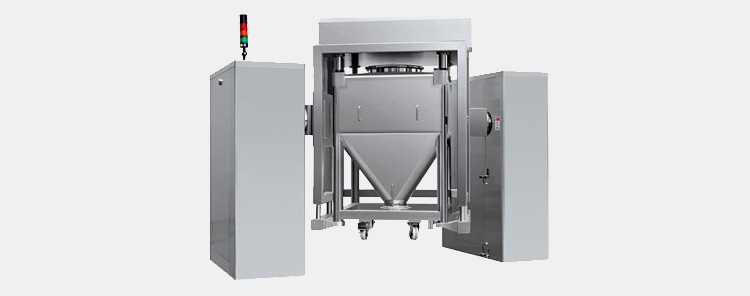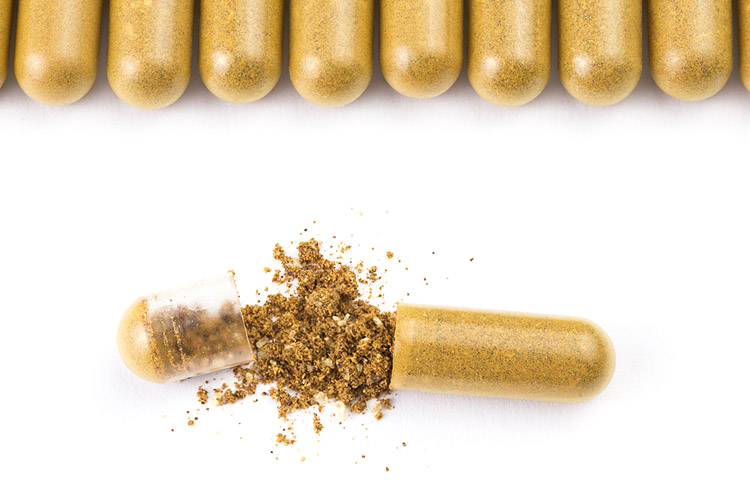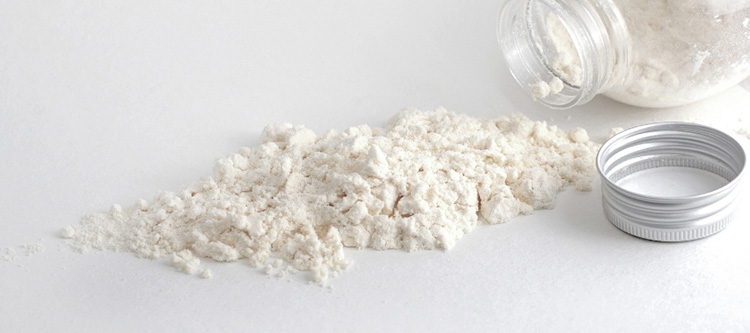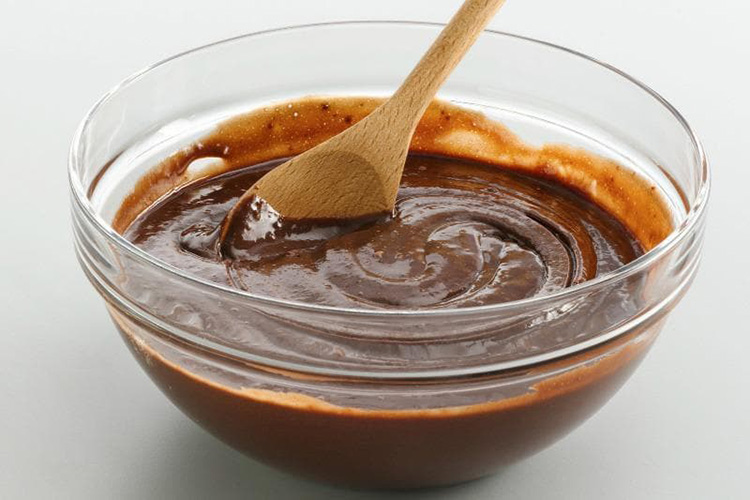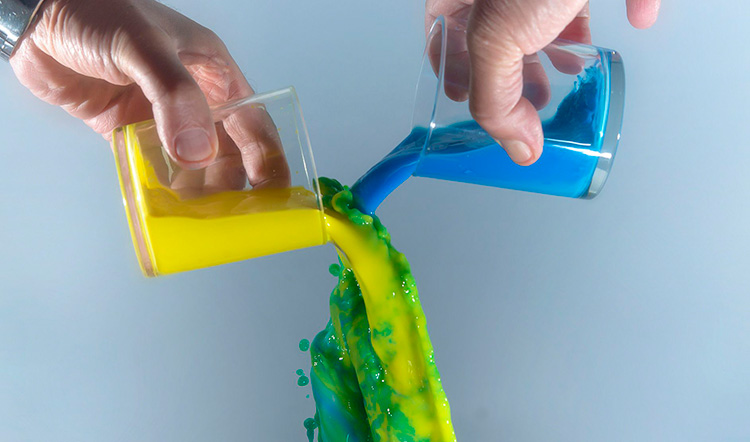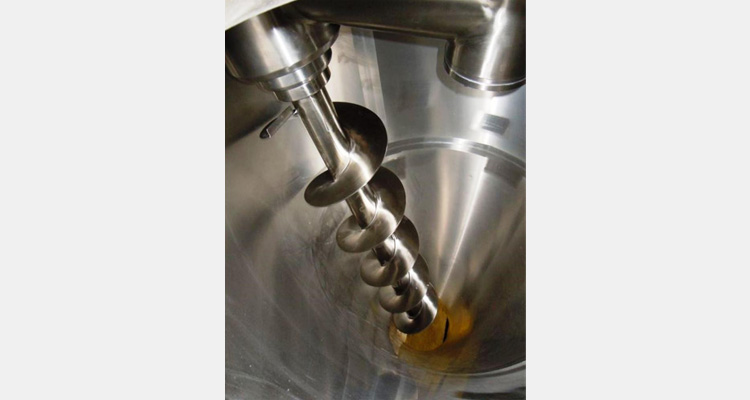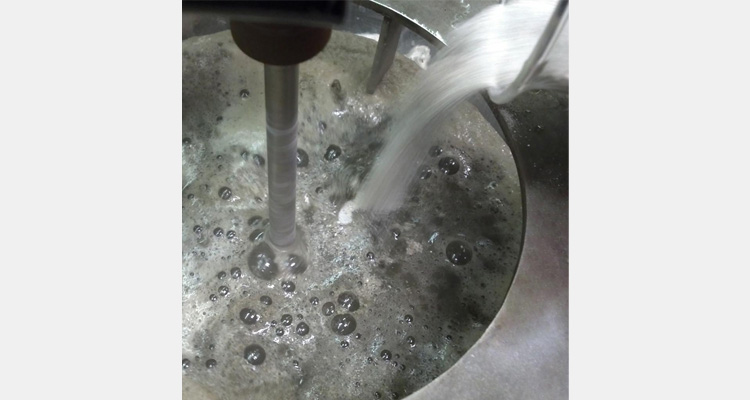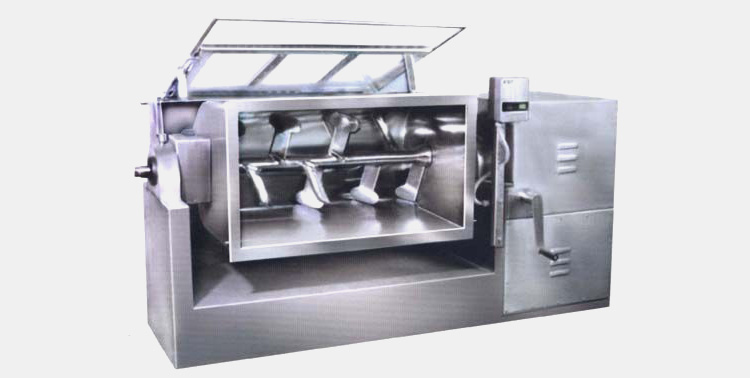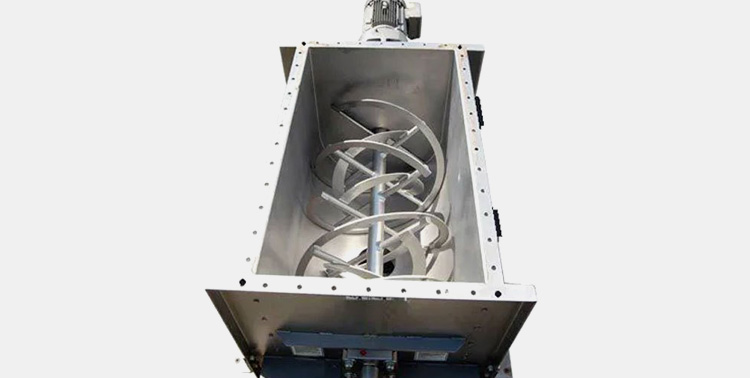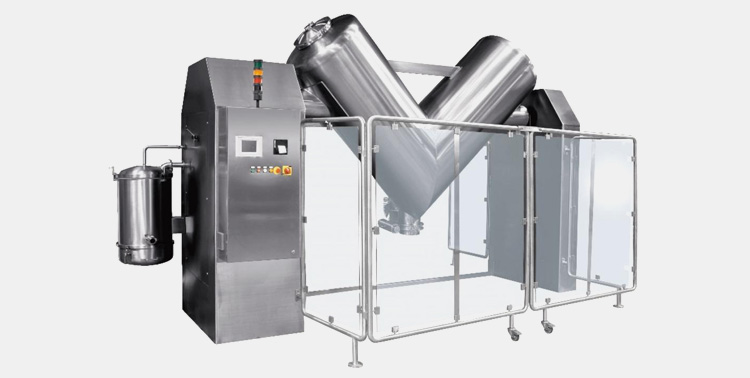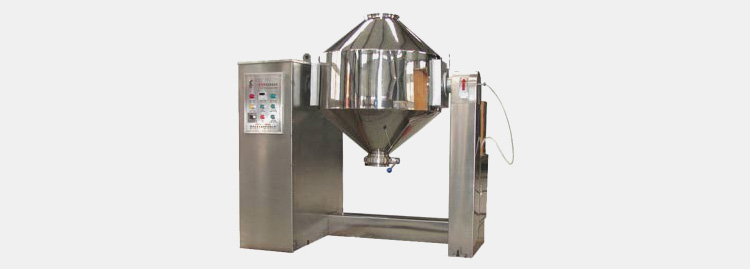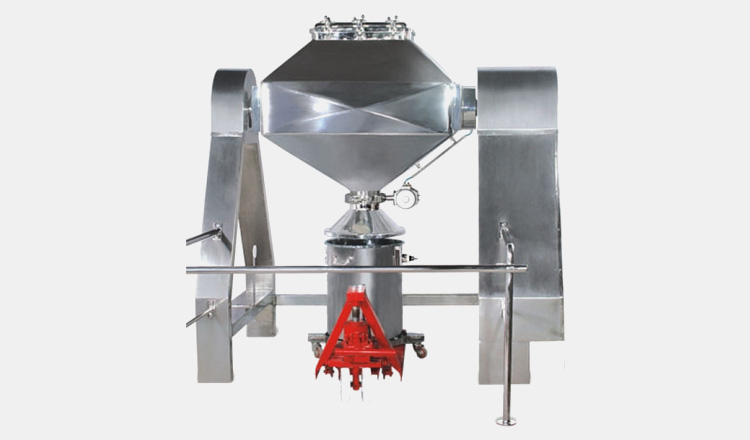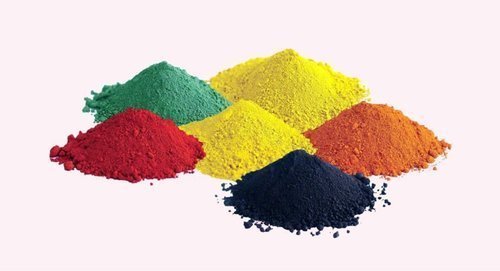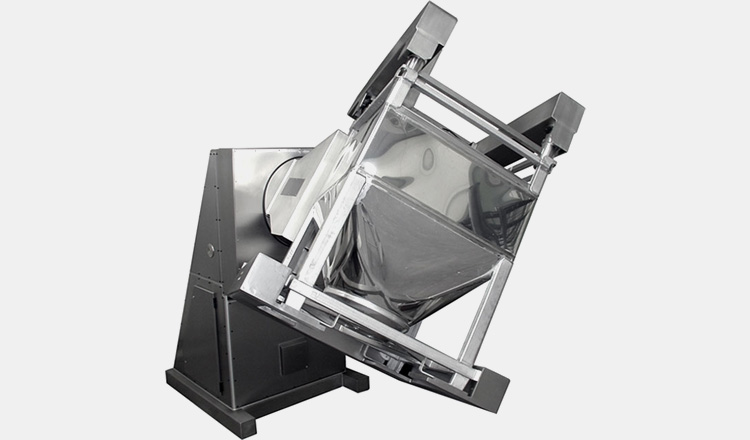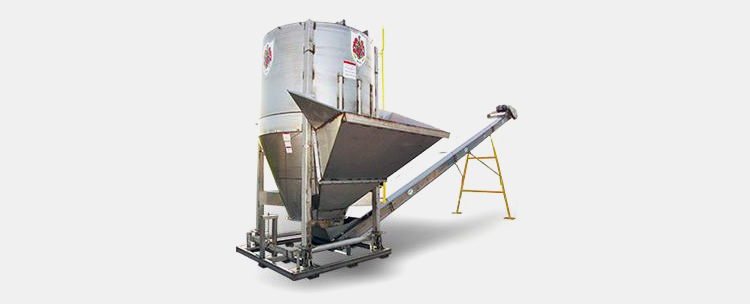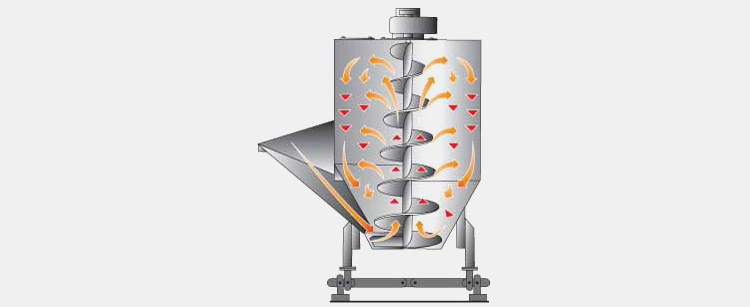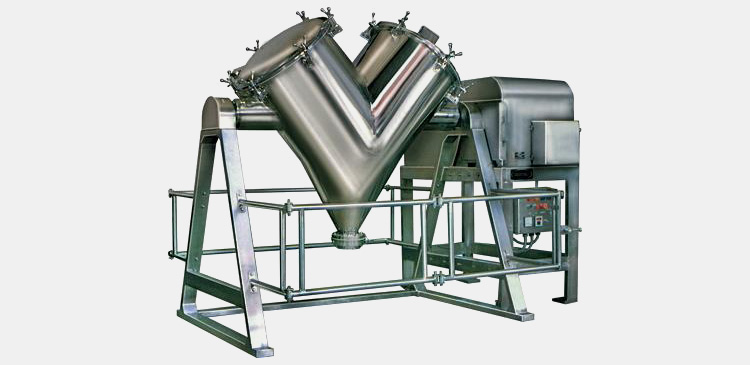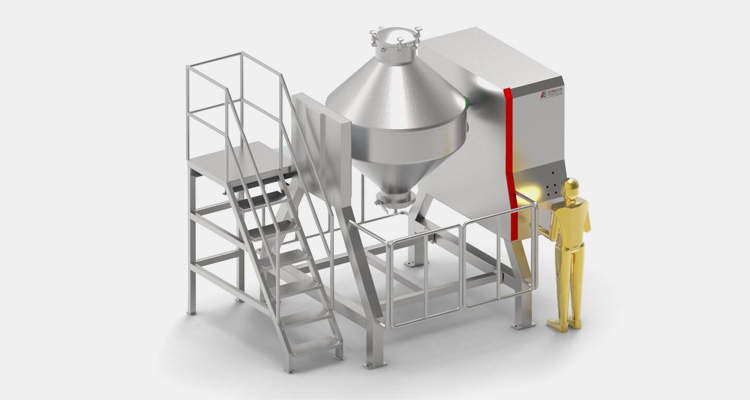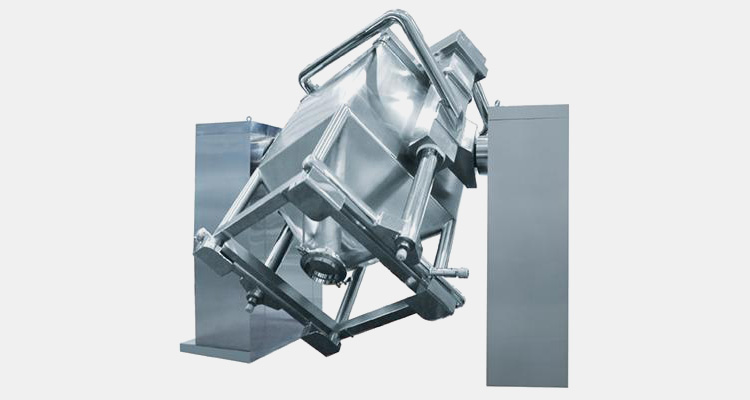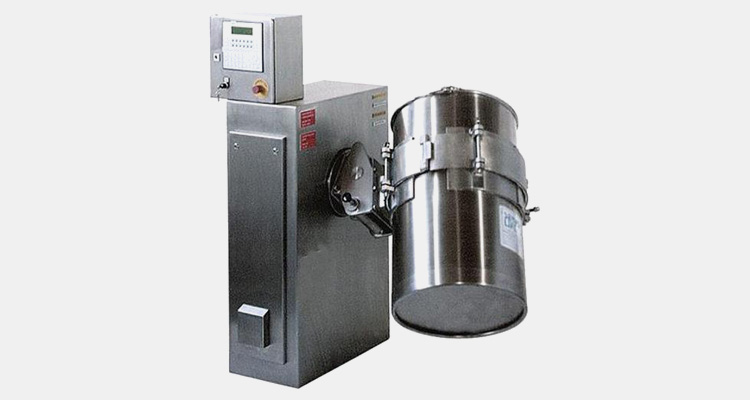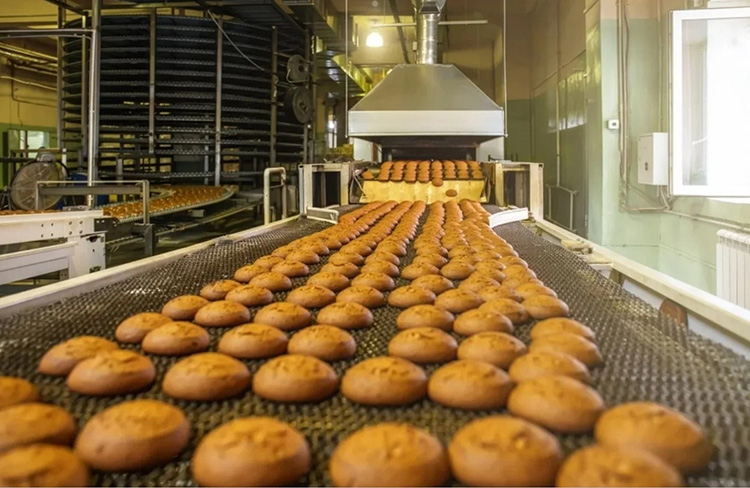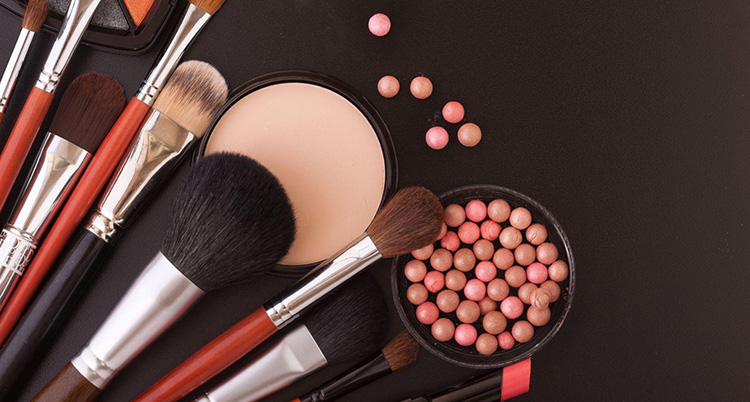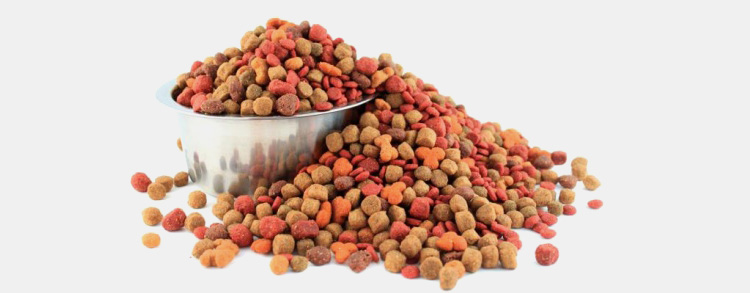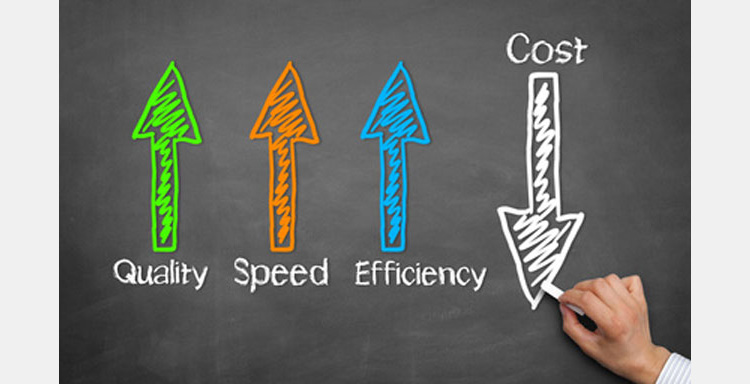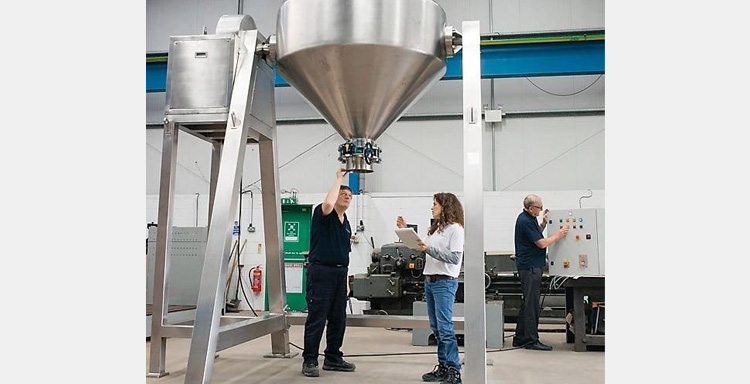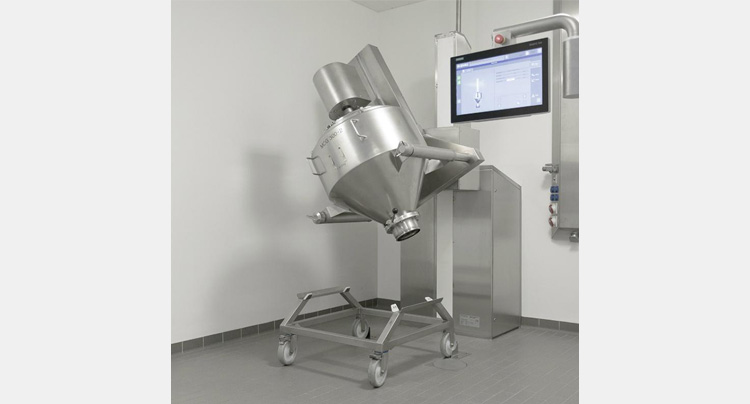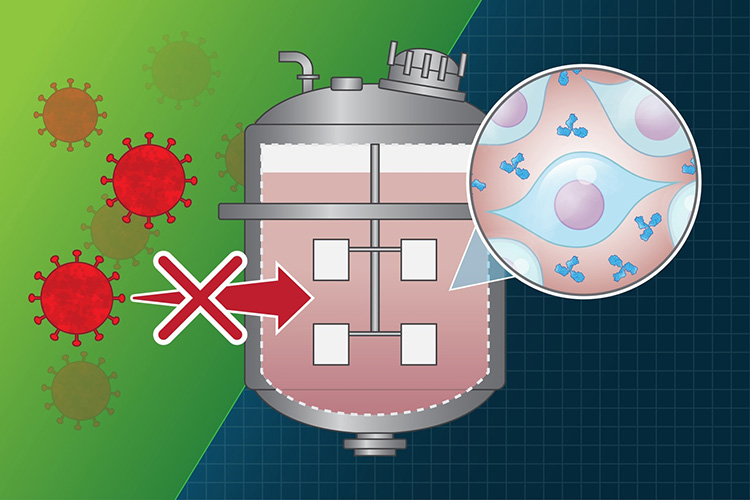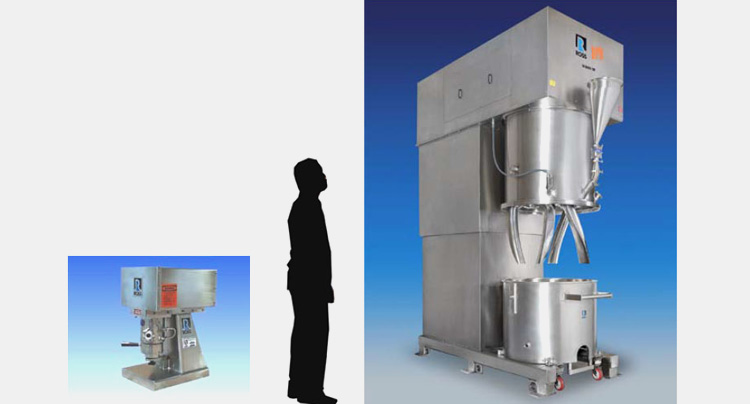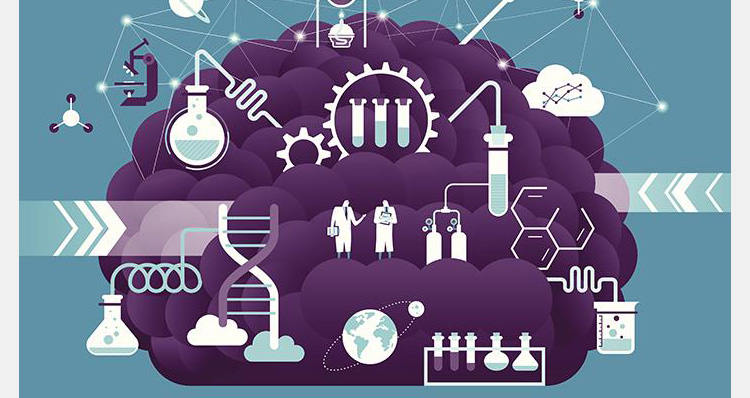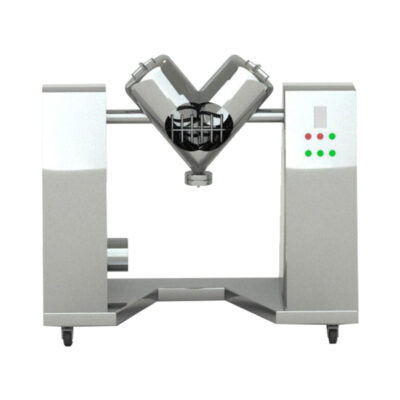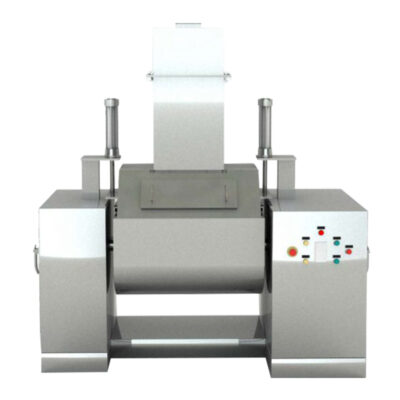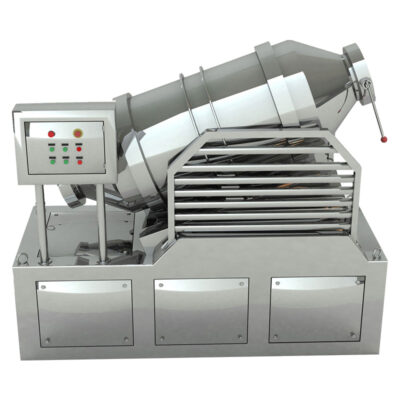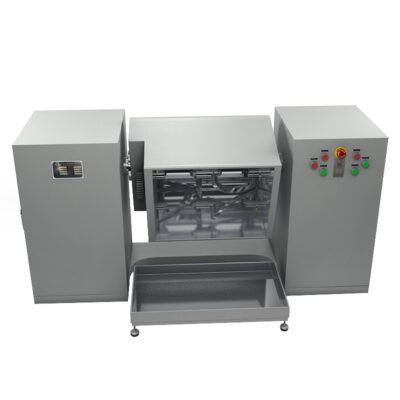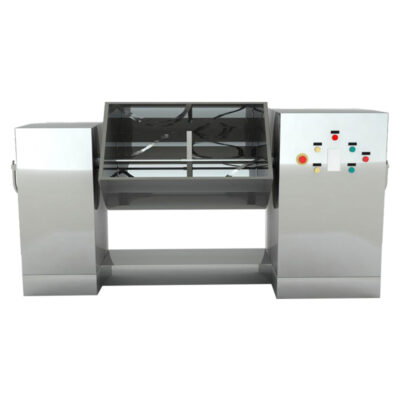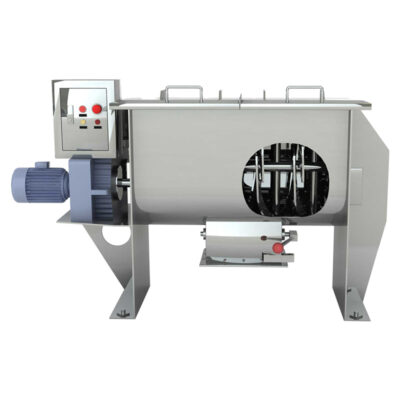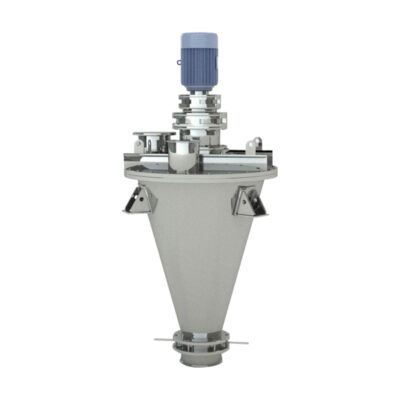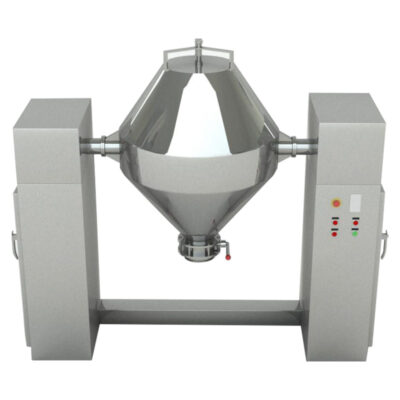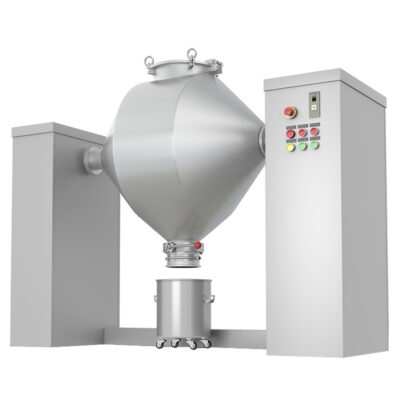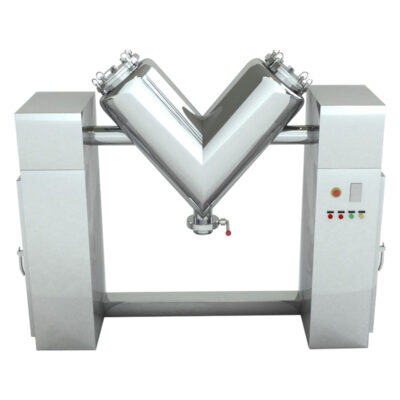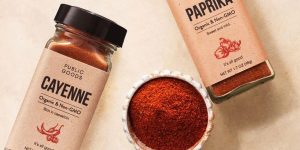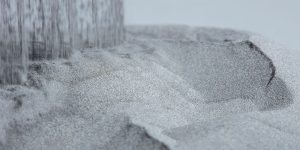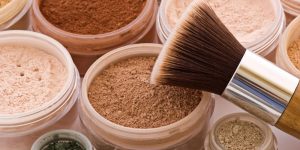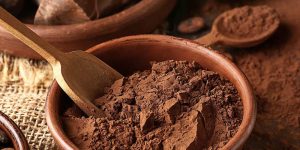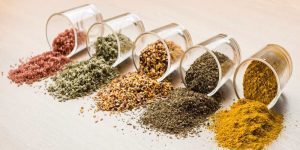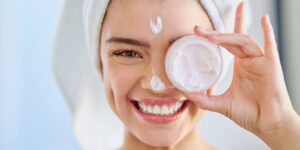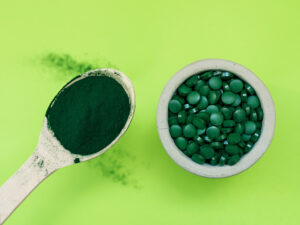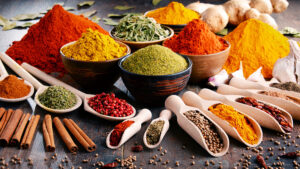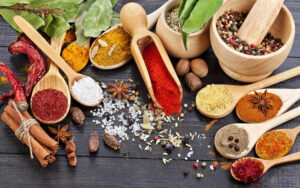Pharmaceutical Blender:The Ultimate Buying Guide In 2025
There is no disputing on the significance of particle size in pharmaceutical dosage formulations. But homogeneity of blend is also an essential factor you can’t ignore.
It is of well-known that pharmaceutical manufacturing units are firmly relying of high-quality pharmaceutical blenders. Pharmaceutical blender is generic and decisive tool that ensures a finished product hold the desired attributes on its composition, reaction, texture, etc. The key purpose behind it popularity is competitive benefits and profitability and optimum product quality profile to pharmaceutical industry. Whether you are buying blending equipment or improvising relative sale, the follow blog can be helpful for you.
LET’S BEGIN!
1.What is a pharmaceutical blender?
Aipak pharmaceutical blender
When you hear the term ‘blender’ you often think about the blenders that are used in homes. These blenders are used to mix different foodstuff.
Blenders are also used in the industries and they have a major role in the pharmaceutical industry. It is widely used in the pharmaceutical industry to mix different ingredients and chemicals for the manufacturing of the drug. These are large tanks usually made up of stainless steel. But they can also be made of cast iron, aluminum, and steel. They are used for processing large batches of products.
After making the granules, blenders are used to mix various substances. The mixing of powders is dry and wet. This mixing depends upon the chemical nature and reactions of various substances.
The purpose of these blenders is to aid in the reaction between different powders. The first step in this procedure is mixing. Then the mixture goes through different conditions like temperature, speed to acquire specific products. These blenders help in breaking down ingredients and performing the reactions on the large scale.
Different types of blenders have the same functions but they have their unique purposes. These blenders have different shapes and sizes.
2.What is the difference between blending and mixing?
Blending and mixing are two similar words, and they have the same meanings.
These two are the processes that combine different substances to create a new product. Substances are that are amalgamated by blending and mixing have different states. They can be solid, liquid, organic, inorganic, etc. They have different fluidities and pH.
People often use both these terms interchangeably. Very few people know that there are few technical differences in both words. Let's first define both the terms.
- Chemical Blending
This process combines various chemical and creates a product that has unique characteristics. This product is completely blended and it cannot be separated.
- Chemical Mixing
This procedure mixes different substances and creates a homogenous mixture. This mixture can be separated into its ingredients. Chemical mixing involves different processes like dry mixing, mashing, decreasing particle size.
Now let’s discuss the differences between these two processes.
- Mixing usually involves the mixing of two liquid or gas state substances. It is linked with combining liquid-liquid, liquid-gas, and viscous matters. Blending is the process that combines two solid substances with a little bit of liquid.
- Mixing is a temporary process. The resultant product of mixing can be easily separated into its components while blending is the permanent process. The new product created by the blending has its distinct characteristics and cannot be separated into individual ingredients.
- Mixing is a rigorous process. It involves strong forces that mix several materials. Blending is a gentle process. It creates a blend in which every component has uniform distribution and specific ratio.
3.What is the purpose of a pharmaceutical blender?
The purpose of a pharmaceutical blender is to combine and blend substances of different consistencies and properties.
- These are very important in the pharmaceutical industry to coat core drugs, diffuse liquids, and enhance the quality of the drug.
- Blenders are employed to create a mixture of smooth and uniform consistency.
- These instruments are vital in amalgamating organic and inorganic materials for the manufacturing of drugs.
- These are also employed for the adjustment of pH and thickness of materials.
- Various formulas are created for accurate and uniform homogenization of chemicals and also to prevent unnecessary reactions.
- Blenders play an essential role in different procedures like dispersing solids, mixing powders, and creating suspensions.
- They are also applied in different chemical reactions for creating new products.
- They also merge active pharmaceutical ingredients.
- These blenders help ensure the dose precision and stability of the core drug.
- They aid in the maintenance of drug appearance and uniformity.
4.How many types of blenders are used in the pharmaceutical industry?
Blenders are the most useful equipment in the pharmaceutical industry. There are many types of blenders available in the market. Every business chooses that type of blender which are suitable for its need.
All these blenders have the same function but the difference lies in their design. Blenders used in the pharmaceutical industry are
- Mass Blenders
- Ribbon Blender
- V Cone Blenders
- Double Cone Blender
- Octagonal Blender
- Drum Blenders
- Bin Blenders
- Vertical Blenders
Various kinds of blenders and their structural design are discussed below:
Mass Blenders
It is equipment in which a mixing shaker is placed horizontally in a steel casing. The mixing shaker has a simple rotation and rotates at a very slow speed.
It has various blades for mixing and these blades are enclosed in a sealed container. This container is slightly tilted which aids in the unloading of the materials.
These instruments are composed of transparent carbon casing so that mixing materials can be seen from the outside. Also, these are equipped with safety switches. These help stop the machine when the lid is opened.
Application
- It is used in tablet granulation.
- It is employed for mixing wet and dry lumps.
- It is used to mix highly viscous substances.
Pharmaceutical Blender- Mass Blender
Ribbon Blender
It is a light-duty low-shear blender. It is the type of connective blender. It is mostly used for mixing dry and pre-processed powders. It is made up of a U-shaped shell that has a rotating helical double ribbon-shaped stirrer.
The Rod of the stirrer is placed in the middle of the casing and helical ribbons are attached to the shaft of an agitator. There are external and internal helical ribbons that why it is also termed as a ‘double helical ribbon blender’. One helical ribbon rotates in a clockwise direction and the other rotates in the anti-clockwise direction.
These helical blades are rotated by a motor, gearbox, and coupling. They also have a feeding hopper and discharge port.
Mixing time is around 10-15 minutes.
Application
It is used for the dry mixing of solid lumps.
It also processes large batches of wet mass.
Ribbon Blender
V Cone Blenders
It is also called a twin shell blender. It is the kind of tumbling blender. It consists of a v shaping tumbling container. It has two mixing shells that are joined to form a V shape. These are tilted to 70-90° angles. V cone aids in the movement of particles and easy blending.
It is rotated on the horizontal axis causing the material particles to fall and stumble on the surface of the mixture. Material can be fed into the blender from either end.
It has a steel casing and is equipped with worm gear for controlling the speed. It process batches having a weight capacity of 20 kilograms to 1 ton.
Application
- It is used for mixing fragile substances
- It is used for homogenous solid-solid amalgamation.
V Cone Blenders- Pharmaceutical Blender
Double Cone Blender
It consists of double cone-shaped shells which are fixed on the cylindrical support. This belongs to the category of tumbling blenders. The axis of rotation is at 90° angle to the axis of cylindrical cone shells. These cones are in a slanted position.
It is equipped with a gear box and motors for adjusting the speed of the machine. It has a stable cone and fireproof motor to prevent accidents.
It has a butterfly valve for unloading the material. This valve is positioned at one end of the cone. The other end of the cone has a hole for loading the substances.
Applications
They are used for the dry blending of less viscous substances.
Double Cone Blender- Pharmaceutical Blender
Octagonal Blender
The design of the machine is composed of shells with ends like an octagon. The middle portion is rectangle-shaped. The ends are connected with firm stands. It is classified into the category of tumbling blenders.
The right side stand is joined with a gear box through the chains and cogwheels. These are connected with the motor. The shell assembly is made up of stainless steel.
The inner surface of the octagon shell is mirror polished while matt polish is applied to the external side of the octagon.
Material is loaded inside the mixing shell through the charging port. This charging port is located at the top of the shell. Unloading of products is done from the butterfly valve.
The metal body is fully encased to prevent contamination and exposure to dust particles. It is easy to wash and occupies less space than v cone blenders.
Application
- It is used for the slow and gentle mixing of dry granules.
Octagonal Blender
Drum Blenders
This blender is made up of a gallon-like drum. Drum blenders are kind of tumbling blenders. The blending of materials in this blender is achieved by rotating the drum.
This blender does not have internal rotating parts like paddles or shakers. The blending of heat-sensitive materials is achieved effortlessly. In this blender, heat is not produced due to friction. Because of this heat-sensitive materials are not damaged.
It is a fully enclosed system and is powdered with electric motors. This blender does not have dead spots which ensure uniform mixing. It does not require much power for its running.
It needs a minute headspace. Materials are poured and unloaded via a common valve. It is also made up of a single rotating seal. It has a simple access door that is fitted with an interlocking key. This door is lifted for cleaning.
Application
- It is suitable for blending delicate and fragile substances.
Bin Blender
It is also called free-fall blender or v blender. Bin blenders are classified into the class of tumbling blenders. It is rectangular, square, or of V shape. The shell is portable and can be moved anywhere on the stand.
It is also equipped with laser guards which detect humans and other objects present in the path of the machine. It prevents humans from accidents. These guards have an alarm that is triggered when working personnel is entering the security zone.
It also has clamping bars which help in stabilizing the machine during rotation. It has a technologically advanced control panel. The function of this control panel is to regulate the operating parameters of the machine.
It has two opening valves. One is for loading the materials inside the container and the other is for unloading the materials.
Application
- It is used to mix grainy substances.
- It is employed for the blending of substances present inside the capsule.
Bin-Blender
Vertical Blender
It has a tapered auger shape. Vertical blenders belong to the group of connective blenders. It is narrow at the top and has a large diameter at the bottom. It is made up of stainless steel body.
It has a drive system, a gearbox, and an electric motor. Materials are poured inside the vertical blender by an inlet hopper. These hoppers have a screen that does not allow unwanted materials from entering the vertical blender.
End products are removed from the bottom of the vertical blenders by the discharge valve. This discharge valve can be unlocked manually, electrically, and hydraulically.
This vertical blender is very easy to clean and maintain. It has a dual auger system which prolongs the shelf life of the blender.
Application
- They are used for blending dry granules and pellets.
Vertical Blender
5.How does pharmaceutical blender work?
There are two main categories of blenders. The working mechanism of both these categories is discussed separately.
- Connective Blenders
- Tumbling Blenders
Connective Blenders
- Ribbon Blender
In ribbon blenders, the particles are moved with the rotating helical ribbon. This movement occurs in two directions as external ribbon blades rotate the mixture in one direction while internal ribbon blades move the mixture in the other direction. Two axial movements of material result in the homogenous product. Mixing in the ribbon blender is carried out in 15-20 minutes.
- Vertical Blender
In a vertical blender, blending screws move very slowly and turn the material gently than the ribbon blender. These stirrers rotate along the walls of the conical container; lift the material upward as these rotate the material. The material slowly moves towards the upper level in the conical shell. Then these particles rotate towards the middle of the container and from there go back towards the bottom of the vessel. This rotation of blending screws converts the solid material into a homogeneous mass.
Tumbling Blenders
- V Cone Blenders
The blending of materials in these blenders occurs through the tumbling action of the mixing tank. When the blender falls, the substance present inside it, divide and then combine again. This recurring action of dividing and assembling substances results in a uniform mass.
The blending time of this blender is about 5-15 minutes. At the reduced speed of blender, shearing forces are low while at the high blending speeds shearing forces in the blenders are high.
V Cone Blenders
- Double Cone Blender
For proper blending of the material, it is ensured that the mixing tank of the double cone blender is filled with two-third of the volume of working capacity. Blending is achieved by the tumbling action of the blender. The revolution rate of the mixer is about 30-100 times per minute.
Double Cone Blender
- Bin Blender
In the bin blender, mixing occurs through the falling action of the bin. Wave or shearing force produces the first blending action. In this blending action, the top one-quarter of the substance rotates. Stand orientation produces second blending action. The mixing particles fall like an avalanche at the surface of a solid bed. This free-falling of the bin causes the substance to rotate and get a blend.
Bin Blender
- Drum Blender
It is a tumbling blender in which tilting of the mixing tank causes blending of the mixture. The horizontal cylinder of the drum blender rotates around its axis and the gravity pushes the mixture to fall. Again with the rotation of the drum, powder moves upward. Due to this, the up and down motion of powder, blending of materials take place.
Drum-Blender
6.What is the industrial application of pharmaceutical blenders?
The use of pharmaceutical blenders is widespread. They are used in many industries such as
- Pharmaceutical Industry
These are used in the pharmaceutical industry for the manufacturing of tablets. These blend excipients to form homogenized products. These have importance in the direct compression of tablets.
Blenders control the reaction conditions such as temperature and pressure between excipients. They also perform reactions between active ingredients on the large scale.
- Food Industry
Different raw ingredients are blended with the help of blenders. The process of blending is essential in the food industry. It is very important to maintain the consistency of end products. If a recipe is not blended properly then the appearance, flavor, color of the product are affected.
These are used in large-scale baking industries. They are used to mix milk powders, spices, and dry flavors.
Blenders are also used to add preservatives and artificial flavors to different edibles in the food industry. Adding preservative facilitate the process of transportation of food goods and enhance their shelf life.
- Chemical Industry
These are used to make abrasives for repair, automotive polishing, and construction. They are also used to make toothpaste.
These are also used in the chemical industry to make aerosols, dry-cleaning agents, slurries, and coal suspensions for the protection of airplanes.
They are also used to blend powders for the production of fertilizers. They also form lubricating grease and propellants such as cellulose, etc.
- Cosmetic Industry
The blending of various powders is important for the smooth consistency and texture of different cosmetic products such as lotion, cream, etc.
Pharmaceutical blenders are used for the mixing of carbopol gels which are used as the thickening blend for lotion, sunscreens, and shampoo.
These blenders are also used to blend powders such as coat talc powder for foundations.
- Pet Industry
These blenders are used in the pet industry for the formulation of pet dry food like soft biscuits, flakes, and kibbles. These blenders are used to add different additives to animal feed.
7.How pharmaceutical blender benefits your production?
Pharmaceutical blenders have many benefits that enhance the performance of your operation. Investing in pharmaceutical blenders boosts your business.
Some benefits of pharmaceutical blenders are given below:
- These blenders have few maintenance requirements
- They produce a blend of high uniformity.
- They can be dismantled easily which is helpful in the cleaning of a blender.
- They are equipped with an automatic control panel which makes them easy to operate.
- They do not consume a lot of power which decreases your electric bill.
- They are equipped with a sensor that stops the machine automatically in case of accidents. This prevents damage to the machine.
- The fully enclosed design of these machines helps in eliminating the risk of contamination of products.
- These machines also prevent the wastage of materials.
8.What are the affecting parameters of the blending process? How to avoid them?
Sometimes you face issues in operating the pharmaceutical blenders. These are highly inconvenient as they cost a lot of time and effort. But do not get worried over these issues. They can be easily solved.
Few problems and their solutions are given below:
Increase Time in Blending
Sometimes materials take a lot of time to blend.
Reason
This is due to
- The mixing tank is filled greater than its capacity.
- The order in which materials are loaded in the mixing tank is not right.
Remedy
Do not fill a tank greater than 70% of its capacity.
You should pour smaller substances between larger substances.
Leakage of Materials
Materials get seeped out from the tank.
Reason
- The sealing mechanism is too old.
- Compression robes present in the sealing mechanism are old.
Remedy
- Switch the sealing mechanism at the side of the tank with a new one.
- Substitute the compression robes.
Blockage in Blender
Sometimes the blades or stirrer in the blender are unable to rotate. They face the blockage.
Reason
- The powder size is too large.
- The amount of material loaded in the blender is too high.
Remedy
- Decrease the density of the materials.
- Lower the batch size of the loaded materials. The loading capacity of the blender should not increase by 70%.
Quality of End Product is Low
Sometimes the product is impaired and you get low quality of the resulting product.
Reason
- Very high blending time.
Remedy
- Decrease the amount of mixing time.
Mixing Tank Becomes Immobile
The mixing tank stops rotating during the operation.
Reason
- The amount of materials in the mixing tank is very large.
Remedy
- The amount of material in the mixing tank should be less than 70% of its capacity.
9.How to select an appropriate blender according to your requirements?
Several kinds of blenders are used in the pharmaceutical industry. Each type of blender has its advantages. Choosing the right kind of blender is very important as it saves money and time.
Many attributes should be considered before buying a pharmaceutical blender. A few of the things that should be kept in mind while purchasing the blender are discussed below:
- Space Availability
Before buying the equipment you should consider how much space you have on the floor. If you have low space then you can buy a vertical blender. As it requires less foot space.
If you have limited space overhead then you can purchase a ribbon blender. This has a small loading system.
Pharmaceutical Blender
- Friability of Product
If you are blending fragile substances then you can use a vertical blender, v cone blender, or double cone blender. These blenders have gentle blending due to their design.
- Budget
If you do not want to spend much on power then do not select ribbon blender as your buying option. This blender requires more energy than other blenders as it has long mixing cycles that need more power.
- Sensitivity of Material
Ribbon blenders produce a lot of heat during blending which can destroy the heat-sensitive substances. So if you want to mix heat-sensitive materials then consider buying v cone or double cone blenders.
- Discharge
If you require the complete discharge of material then buy v cone or double cone blenders. These blenders have a complete discharge because of their low cones.
- Blending Accuracy
Every type of blender produces homogenized products. If the blending accuracy of the end product is essential, then first check the blender’s operation before you consider buying it- to make sure that it delivers your required results.
- Contamination of Products
Ribbon blender possesses the major contamination risk of the resulting product due to its packing gland. If you want contamination-free blending then you should take into account v cone or double cone blenders.
- Timing of Processing Batch
You should consider the blending time of different types of the blender before you make your selection. It is not an important parameter but you should think about the blending time as it saves money. Cone blenders and ribbon blenders perform the same functions but cone blender is about 30% faster than ribbon blenders.
- Cleaning
Ease of cleaning is an important concern as it saves time and effort. Sometimes you require complete cleaning before processing the batch. Cone blenders are very easy to clean. You do not need to completely dismantle the packing gland for cleaning.
You should select a cone blender without bearing at the bottom end of the screw. Cone screw blenders are easy to clean, do not have hard maintenance procedures, and provide a complete discharge of product.
- Capacity of Blender
If you want to blend small batches of substances then select a cone screw blender. These blenders can blend substances having a load of 10% of their blending capacity efficiently due to their design. While ribbon blenders have about 40-50% of full blending capacity.
10.What are the future trends of pharmaceutical blenders?
Tablet formulation involves three basic steps. One of the easy steps in tablet manufacturing is the compression of active pharmaceutical ingredients. Blending plays a significant role in this step.
That’s why blenders are crucial in the pharmaceutical industry. They perform batch processing and continuous processing.
They are helpful in
- Homogenization of materials
- The chemical reaction between substances
- Making a new product that has unique characteristics
Blenders are also used to
- Transfer heat between the material
- Preparing various kinds of suspensions
- Altering rheology of materials
End users can choose between different kinds of blenders depending upon their working mechanisms such as dry mixing or shearing.
Blenders equipped with modern technology improve the efficiency of blending. With the introduction of bin blenders, it became easy to load materials in blenders and avoid the risk of contamination.
With the growth of the pharmaceutical industry and the high demand for generic medicine more and more companies are venturing into this market. This also indicates the growth in the pharmaceutical blender industry.
With the spread of chronic diseases, it has been estimated that the pharmaceutical industry will change remarkably within the next 5-10 years. So the need to procure pharmaceutical blenders will also increase.
It has been reported that the market of pharmaceutical blenders has seen an increase in North America as this region is one of the leading drug manufacturing regions of the world.
With the introduction of government incentives in China and India for drug manufacturing companies, it can be predicted that the market of pharmaceutical blenders will make progress in these regions.
So with the rapidly advancing pharmaceutical industry, there is a need to introduce technologically advanced and fully automated blenders in the markets that will improve the efficiency of the blender.
Conclusion
Pharmaceutical blenders have a special place in the pharmaceutical industry. They perform the mixing and blending of active ingredients and also aid in their chemical reaction.
Many kinds of blenders are available in the market. They have unique designs. These blenders mix different ingredients. Some blend fragile materials while other blend heat-sensitive materials.
In this blog, every kind of blender is discussed in detail. Hope you have learned about the unique characteristics, design, and working mechanism of each blender.
By going through this guide, it is hoped that you have understood the significant role of these blenders in the Pharma industry, now you can purchase a pharmaceutical blender that meets your business.
Bin Mixer Related Products
Bin Mixer Related Posts
Bin Mixer Related Videos
CONTACT US
Tell us your raw material and project budget to get quotations within 24 hours.
WhatsApp Us: +86 181 6426 8586
Want the best price & newest pharmaceutical machinery buying guide,tips and trends sent straightly to your box?Sign up for AIPAK’s monthly newsletter,we’re free for your consultation and Offer you the most suitable solutions!
The Buyer's Guide
- Capsule Filling Buyer's Guide
- Blister Packaging Buyer's Guide
- Tablet Counting Buyer's Guide
- Tube Filling Buyer's Guide
- Cartoning Buyer's Guide
- Gummy Making Buyer's Guide
- CO2 Extraction Buyer's Guide
- Empty Capsules Buyer's Guide
- Suppository Filling Buyer's Guide
- Tablet Coating Buyer's Guide
- Tablet Press Buyer's Guide
- Softgel Encapsulation Buyer's Guide
Most Popular
- 7 Importance Of Pharmaceutical Packaging In Different Applications You Must Know
- 6 Advantages You Must Know About Tablet Counting Machine
- 8 Advantages of Blister Packaging You Must Know
- 6 Critical Applications of Automatic Capsule Filling Machine
- 6 Stations You must Know to Improve the Filling Quality of Automatic Capsule Filling Machine
Tell us your material or budget,we'll reply you ASAP within 24 hours

